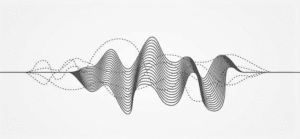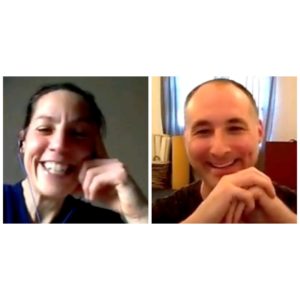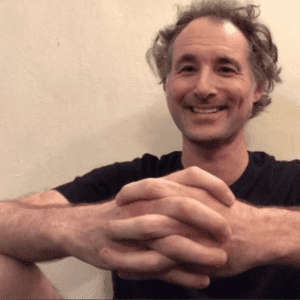
1. How would you define your personal practice?
The heart of my personal practice is daily engagement in Awareness Through Movement (ATM), a quiet exploratory somatic practice which is more radical than most people realize. In any case, I’ve always approached it as somewhat of a radical in so much as I’ve wondered since my first encounter with the Feldenkrais Method just how far one could stretch it’s potential.
So on the one hand, I like to study these lessons deeply – often repetitively – to find out all they have to teach me. On the other hand, I like to test my understanding of what Feldenkrais taught by seeing how many ways I can improvise with the classic material and by creating my own original compositions. In this way, my personal and teaching practices are interwoven.
In my way of understanding it, the Feldenkrais Method is like jazz. I’ve already mentioned “composition” and “improvisation.” These words are central to my vocabulary because of my background in experimental music. I often organize my thinking around musical metaphors, because music is my greatest joy in life. When I feel good, I feel musical.
In addition to Awareness Through Movement, I have a daily meditation practice which I usually follow with Lectio Divina, a process of reading through two texts – one poetry and one prose – to find the words that ring out spontaneously and then use those phrases as a basis for contemplation. The version of this practice that I do follows the format taught by John Vervaeke, a cognitive scientist and philosopher who has been a big influence on me since I discovered his work earlier this year.
Through Vervaeke, I also became exposed to the practice of Dialogos, a modern-day version of classic philosophical dialectic, a kind of free-flowing conversation that can emerge into a group flow state if the participants are sufficiently present and engaged. A related practice is the Art of Circling, also a conversational practice, created by Guy Sengstock, a frequent partner of Vervaeke in Dialogos. I am currently enrolled in a year-long training at Sengstock’s Circling Institute and join several circles each week as I am learning to become a facilitator.
I currently teach a weekly class called Expand Your World and periodically offer workshops on the Musicality of Being. These offerings are an ongoing experiment wherein I am discovering how to blend and weave all the elements of my personal practice and musical background into a process I call “embodied dialogue.”
2. What turning points have you encountered on your movement journey?
Many.
In some sense, it feels like this is a question about my life story (which I’ll spare you!) because I’m at a place of pulling together so much of my life-long learning and so there are so many things that feel relevant.
The major landmarks:
The first half of my journey, you might say, was my musical journey, which began with adopting the habit of speaking in tongues while walking to school in second grade and exploded in the college years when I invented my own language, played in cooperative ensembles, and helped lead an experimental community orchestra.
But right after college, the world looked very different to me after a visit to Cuba and I made the painful decision to drop music. I became a dedicated radical social activist and worked in meat plants for the next decade, learning how to speak Spanish and run a bandsaw on the night shift. I still had music in my head which, in combination with the physical work, and the musical rhythms of the factories I worked in, brought me into contact with experiences of the flow state on a fairly regular basis.
That chapter of my life came to an end a decade later in an emotional lowpoint punctuated by divorce. This was when I discovered the Feldenkrais Method and also identified myself for the first time as a dancer, having deeply responded with my body to music all my life, but never having had any training. I discovered contact improvisation and also performed with an ensemble. At this time I also returned to my investigation of language and was carrying out somatic experiments by breathing in all kinds of odd number patterns while running, simultaneously improvising music in my head in relation to those rhythms.
Finding Feldenkrais was possibly the biggest change of all because it was the moment where all my threads started coming together. In that sense, the change has been continuous for 10 straight years now. Inside that experience, there have been other very significant discoveries that opened my possibility space even wider, including my encounters with Fighting Monkey Movement Research (which inspired the creation of the DC Movement Research group with my friend Juliana Pongut´, a contemporary dancer), Wim Hof Method, regular sitting meditation practice, and the Art of Circling.
Circling is the most recent discovery and might end up shaking me up even more than the Feldenkrais Method did. It has massively changed my experience of life over the last 6 months and I am now halfway through a practitioner training at the Circling Institute. I found out about Circling from the cognitive scientist and philosopher, John Vervake, whose work is also having a deep impact on me and inspiring me to a lot of creative experimentation in my teaching. In other words, right now feels like another important turning point!
3. What role has injury played in cultivating your current niche?
The most significant injury that I have worked through related to a traumatic childhood experience of receiving electro-shock therapy following a pinched nerve in my right shoulder. I also went through a period of depression in my college years when I had a lot of seizure-like symptoms, but I never had them diagnosed.
I have helped many people recover from physical injuries, but it’s not something I emphasize a lot because I always experienced my own physical limitations most dramatically as expressions of anxiety and lack of skillful nervous system regulation. On some level, any physical trauma impacts people psychologically and emotionally. So that’s the place I often start with just about anyone because clearing out some of that gunk makes it easier to listen to the body which is essential to any kind of healing. There aren’t any lasting magic cures without that as far as I can tell.
These days I’m zeroing in a bit more to highlight the anxieties people associate with social interaction since that’s often where all the great things they learn about their bodies go out the window and their deepest habits take over. That has certainly been true for me so I find that idea easy to speak to. It feels like a topic that a lot of people don’t want to touch because it means unearthing so much. At the same time, certain people who know they want to create large shifts in their lives seem drawn to what I’m doing, and that’s the niche I enjoy working with the most.
4. Do you consider yourself a teacher? Why or why not?
Yes, because I try to be honest and open about what I haven’t yet learned and share as much of what I have learned as I can.
5. What has been your experience with physical education, both in the schooling system and sought out knowledge/ know-how elsewhere?
I played soccer as a kid which was amazing for me although I didn’t understand how important it was back then. Physical education in my school experience was nothing special although I looked forward to it as being much more fun than my academic classes.
As a father with a daughter now in 7th grade, I’ve been frankly horrified by what I can see of the movement experience kids have these days. Anyone wondering about the problems of the world could easily start there.
My experience of training in the Feldenkrais Method has been both fascinating and frustrating. The legacy Feldenkrais left behind is utterly astonishing. I feel blessed by what I received. Having said that, there is so much conflict between the various trainers and dogma about how the Method “should” be taught. It’s an unfortunate situation for new practitioners trying to find their own voice. I’m grateful that the Method still exists nearly 4 decades after Feldenkrais left the planet, but in the future I hope to see it show up in the world in a very different way.
6. How do you involve your mind/emotions into your physical routines?
I find it impossible not to. Whenever I do something like that, the quality of my movement suffers for it.
A change in the emotions immediately shows up in one’s breathing and the state of the musculature. Another reliable somatic indicator is one’s sense of size in relation to the environment and other people. Do I seem to be expanding outward into my surroundings or contracting in on myself?
Two more factors impacted by emotions are one’s connection to the ground and to the sound environment. Am I lifting away from my support or sinking into it? Do I have a musical connection to my world or do I feel dissonance?
I can get more specific, depending on my situation, but these four elements – breath, ground, space and sound – are my ways of connecting the physical and the emotional and I also teach them to all of my clients.
7. What are your personal aspirations regarding movement? How do you hope to find purpose and use in the skills you have built?
These days I’m trying to figure out the overall scope of engagement that I’m capable of, but as a person involved in movement professionally, the only way I can feel good about the work I do is if I think it has an impact on making the world a better place.
In the future, I’m interested in doing a lot more community building to facilitate ideal situations for people who want to connect more of the other dots in their lives to their movement practice. This seems to me to be the best way that I can help to multiply the impact of people who imagine a better future for humanity.
8. How can people find/ contact you? Do you have a site or social media handle to share?
Move With Seth on YouTube
@dcfeldenkrais on Instagram
Expand Your World on Facebook
Seth’s Recent Blog Posts
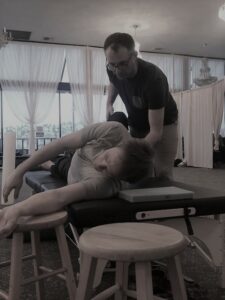
Functional Integration (Passive Feldenkrais)

An Attentive Walk & Talk
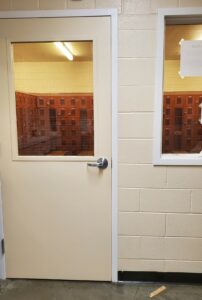
Meditation, Feldenkrais, & the Beginner’s Mind

“Sensemaking” & the Senses
